


WEALTH WEALTH COLLECTIVE MAGAZINE MARCH 2024 www.clime.com.au @clime.australia COLLECTIVE THE
This information constitutes general financial product advice. The advice has been prepared without taking into account your objectives, financial situation or needs. You should, before acting on the advice, consider the appropriateness of the advice having regard to your objectives, financial situation and needs. Before making a decision about whether to acquire a financial product, you should obtain and consider the Product Disclosure Statement (or other disclosure document). We encourage you to obtain professional advice before deciding to invest in a financial product.
2
© Clime
Investment Management Limited
3 Contents 04 Letter from our CEO by Annick Donat, Chief Executive Officer 05 Upcoming Events 06 Letter from our CIO by Will Riggall, Chief Investment Officer 07 Our services 08 Self-Managed Superannuation Funds and the Sole Purpose Test by Harley McDermott, Associate Adviser 10 Joining the dots: Green metals and energy transition by Vincent Chin, Portfolio Manager 12 What you need to know about Philanthropy by Sarah Metcalf, Philanthropy Adviser & Consultant 14 Private Wealth team spotlight 15 Our people 16 Not for Profit (NFP) Round Table series 17 Contact us 18 About the contributors
Letter from our CEO
Annick Donat
Welcome to another edition of The Wealth Collective, where we aim to provide you with insights and opportunities to enhance your financial knowledge and connect more closely with our community.
In this edition, we are delighted to share highlights from a recent not-for-profit event where we heard from Life Ed. NSW, better known for their iconic giraffe – ‘Healthy Harold’. This was a roundtable event where we heard from CEO Jonathon Peatfield and Company Secretary Jim Chaplin about running a nationally recognised NFP governed under a federated model.
As part of our ongoing commitment to community engagement, this event is part of a regular series, jointly initiated with TIP Group (ASX: TIP). We understand that many of our clients are actively involved with or lead their own not-for-profit endeavours. Therefore, it was enriching to hear the experiences and lessons shared by the leadership of Life Education, shedding light on the challenges and rewards of running a non-profit organisation.
In line with our dedication to supporting philanthropic endeavours, we are excited to announce our partnership with Sarah Metcalf, founder of Collective Manifesto. Sarah’s expertise in navigating philanthropic requirements has already proven invaluable to some of our clients. We are thrilled to extend this opportunity to more of you who are seeking to make a meaningful impact through your philanthropic endeavours.

In a departure from financial matters, we would like to take a moment to reflect on the recent Taylor Swift concert, a testament to the power of transcending generations. Olivia (my daughter) attended the concert on Friday night and was promptly offered a ‘friendship bracelet’ from a four-year-old girl who was attending the concert with her aunt. Liv was quite taken with the generous spirit of this young child. Swift’s music has the remarkable ability to resonate with audiences of all ages, much like the enduring symbol of the friendship bracelet. It serves as a reminder of the value of connections and the timeless nature of genuine relationships, both in our personal lives and in the broader context of wealth management.
It was wonderful to see some of you at our recent client briefing events and we look forward to hosting our next round of events in June. Additionally, our Private Wealth advisers will be conducting portfolio reviews, with a focus on exploring new opportunities in the Private Equity sector. We believe that staying proactive and informed is crucial in navigating the ever-evolving landscape of wealth management.
As always, we are here to support you in achieving your financial goals and making a positive impact in the world around us. Should you have any questions or require further assistance, please do not hesitate to reach out to your dedicated Private Wealth adviser.
Sincerely,
Annick
4
For your calendar: upcoming Investor Briefings
Adelaide - 6th June, 9:00am - 12:00pm
Perth - 11th June, 9:00am - 12:00pm
Melbourne - 19th June, 9:00am - 12:00pm
Sydney - 27th June, 9:00am - 12:00pm
Online - TBC
This is an opportunity to hear from John Abernethy and Will Riggall who will share insights into the macroeconomic environment and market trends.
Unable to join our in person briefings? We will also be providing the option to attend an online briefing.
Registration will open soon.


6
Letter from our Chief Investment Officer
Will Riggall
After the rain comes the sun. Where to invest in 2024.
There is a common saying in investing that “bears sound clever, but bulls make money”. Unfortunately for the bears the bulls appear to have data on their side with the ASX200 up 80% of the time over the last 35 years. Over the last 6 months if you had remembered this simple fact, you would have enjoyed a very strong period of returns across the majority of asset markets.
In late 2023, inflation data globally began to indicate that central banks may have slayed the inflation dragon, coupled with more resilient than expected economic growth the scene was set for markets to breathe a sigh of relief and shoot higher. Since November 1st, the ASX300 Accumulation is up +14.73%, the S&P500 has increased +21.22% and the Australian 10 year bond has returned +6.18%1.
Our role as investment managers is to deliver a portfolio solution that will deliver growth through a combination of income and capital to protect client capital from the impact of inflation, while at the same time defend against the permanent loss of capital. For most investors, a multi asset approach to investing is the best way to achieve this, pleasingly this has been reflected in strong returns across the ProActive suite of portfolios.
With these strong gains now booked into performance numbers, the question remains where do we invest to protect the capital and deliver further upside in 2024? The multi asset investment committee meets monthly to debate the forces driving markets and actively reshape the portfolio. Our investment philosophy focuses on the benefits of diversification across asset classes (asset allocation), a dynamic asset allocation process to tilt the portfolio and finally finding the right expression of identified opportunities within each asset class.
This month, the focus turned to private equity and the small cap segment of the ASX where we see an attractive opportunity for strong returns.

As valuations move back to fair value and global equity market concentration reaches all-time highs the benefit of active investing will become self-evident. Private Equity (PE) has long been the domain institutional investors, for example the Australian Future Fund has 18.2% of total assets allocated to the space2. Counter to common thinking PE has proved more defensive during downturns with recent research showing Australian and New Zealand PE funds delivered positive returns during the tech wreck and GFC periods3. The challenge with impatient shareholders in the listed space is private PE’s opportunity, moreover with the cost of capital now reset higher, quality assets that are challenged by high debt loads or poor strategy execution can be taken private and restructured. For advisers, access and liquidity has been a roadblock to investing, however innovators in the space are now offering greater access an asset class which is set to deliver an attractive combination of strong returns with historically low correlation to other asset classes.
The last two years have been a challenging time for small cap investors and asset managers with the ASX small caps underperforming the top 100 ASX companies by 20% over the last year4. With value in ASX large caps now harder to find post the recent re-rate, we see small caps at an inflection point. With the macroeconomic backdrop flashing green driven by stable growth and rate cuts ahead, the underperformance in small caps is set to reverse. Moreover, it’s not just valuation that screens attractive, stocks outside the top 50 companies on the ASX delivered a greater number of beats than misses, a strong indicator of future returns.
The multi decade period of low rates is now behind us, and with investment markets and global economies having now weathered the long-awaited normalisation period we foresee a period of greater stability and growth. Moreover, a disciplined application of the fundamental principles of investing, namely quality and value to be essential in delivery of investment outcomes and client objectives in 2024.
(1) Source: Factset, returns to 29/02/2024
(2) Future fund 30 September 2022 update
(3) Why Australian Private Equity represents good value in 2023, Vantage Asset Management, March 2023
(4) Source: Factset, ASX100 and ASX Small Ordinaries performance 1 year to 4th March 2024
7
Self-Managed Superannuation Funds and the Sole Purpose Test
 by Harley McDermott, Associate Adviser
by Harley McDermott, Associate Adviser
The latest ATO data notes that there are over 610,000 Self-Managed Superannuation Funds in Australia with 1.1 million members, with the sector continuing to grow each year as individuals look to take greater control of their retirement savings. However, while the additional flexibility and control of operating an self-managed superannuation fund (SMSF) is appealing, there are also many important obligations that need to be considered as a trustee of an SMSF.
Understanding the Sole Purpose Test
The Sole Purpose Test can be found in Section 62 of the Superannuation Industry (Supervision) Act 1993 (SIS Act), with the test separated into core and ancillary purposes. For a fund to remain compliant, it must be maintained for at least one core purpose or at least one or more core purposes and one or more ancillary purposes.
The core purpose of superannuation is to pay benefits to members:
• On or after retirement from gainful employment;
• When they have reached a prescribed age, or;
• On the member’s death.
The ancillary purposes of superannuation are for the provision of benefits of each member following:
• Termination of the member’s employment with an employer who, at any time, had made contributions to the fund for that member.
• Cessation of employment due to ill-health.
• Death of the member after retirement where the benefits are paid to the members dependants or legal representative.
• Death of the member after attaining a prescribed age where the benefits are paid to the member’s dependants or legal representative, and
• Other ancillary purposes approved in writing by the Australian Prudential Regulation Authority (e.g. financial hardship).
Essentially, all investment decisions by trustees should be made with the intention of preserving and financing the members retirement or death benefits. To maintain a fund for any other purpose is a breach of the SIS act and can have serious consequences.
The Test in Action
The leading case on the application of the sole purpose test is the ‘Swiss Chalet’ case (Case 43/95(1995) ATC 374). In this case, the fund owned shares in a private company that enabled access to a private golf club for the managing director of the employer-sponsored fund. The fund had also invested in units in a trust that owned in a Chalet
8
Self-Managed Superannuation Funds and the Sole Purpose Test

in the Swiss Alps. While both investments did provide some financial return for the fund, the courts found that the investments were not made with the sole purpose of providing retirement benefits for members.
Another example is Montgomery Wools {2012} AATA 61, where an SMSF purchased units in a unit trust. The unit trust then purchased real estate which was used as security for a related business’ loans. The real estate was then sold, and the proceeds were used to pay down the business’ debt. The SMSF was left with a loan agreement that had no actual loan in place. As a result, the ATO found that the SMSF failed the sole purpose test.
The Importance of the Test for SMSF Trustees
Given the close relationship between SMSF trustees and members (often being the same individuals) and broad spectrum of investment opportunities available, it is essential that trustees always consider the sole purpose test. Issues can arise when investments have the ability (or perceived ability) to provide secondary benefits outside the ‘Core Purposes’ outlined in S62(1). For example, collectibles, artwork, investment property and in-house assets all have the potential to be misused by a trustee operating an SMSF.
Additionally, the ATO has noted that when applying the test that it is an objective assessment of all circumstances relating to the SMSF’s management. In Montgomery Wools, the Administrative Appeals Tribunal (AAT) stated
that it is the ‘objective facts not the subjective view of the trustees’ that is used to determine compliance with the test. Despite the subjective view of a trustee that a decision is made with the sole benefit of providing retirement benefits, when viewed objectively, the decision may be viewed to have an alternative motive.
Conclusion
As Australians continue to look for increasing control and transparency over their retirement savings, SMSFs will continue to grow in popularity. However, it is important that both potential and current trustees understand their obligations in operating a compliant SMSF.
If you have any questions, or would like to discuss your specific situation, please feel free to contact us.
9
WEALTH COLLECTIVE
Joining the dots: Green metals and energy transition
by Vincent Chin, Portfolio Manager
In the second half of 2023, spodumene prices have plummeted quite a bit resulting in a major price drop in the Lithium (Li) sector due to it being a commercially important source of lithium. In addition, this has also impacted the prices of Copper (Cu), Nickel (Ni), Cobalt (Co) and Manganese (Mn) et. al. in the recent past. In my opinion, there are many factors behind this of which I now share:
1. Global growth slowing. Commodities prices usually have a strong correlation to global growth; this will inevitably impact the short-term prices. According to the World Bank, global growth is expected to slow from 2.6% in 2023 to 2.4% in 2024.
2. Consensus has pulled back the growth of EV sale in 2024 to around 20% (from 30%+ last year), possibly due to slowing global growth as well as other factors. This is mainly attributed to less optimistic EU and US sales than due to China. China’s EV sales remain resilient.
3. Different battery technologies are moving faster than previously forecast. For example:
• LFP (Lithium iron phosphate) batteries are growing stronger than expected due to the BYD’s blade battery technology and improvement in power density per kg of LFP battery technology. Moreover, LFP batteries are also cheaper as they do not have expensive Ni or Co in the battery. Telsa has now completely adopted the LFP battery for the Model 3 globally. Model 3 is their lowest range BEV. Previously, I understood

only the Model 3 produced in China uses LFP and now they have decided to move all to LFP globally. This is a huge change. There are also other advantages for adopting LFP battery technology such as higher cycling compared to Lithium nickel manganese cobalt oxides (NCM) batteries, a lower chance of thermal runaway, and supply and cost.
Implications
• Long term forecast for NCM battery technology may need to be pulled back. This means the long term demand of Ni, Co and Mn green metals that analysts have provided over the past 2-3 years is likely too optimistic.
• While there will be an increase in demand for iron ore, this increase I suspect is not material compared to the magnitude of the world’s requirement for construction and infrastructure purposes. My estimate for this amounts to 2% of the increase in demand for iron ore based on a stoichiometric calculation for a LFP battery’s chemistry once the energy transition is completed. However, this calculation is prior to Tesla’s decision to adopt LFP battery technology in all its Model 3. This suggests that this decision will likely result in a marginal increase in iron ore demand over the long term but it may be offset by the Sodium (Na) ion batteries technology (see next).
• Na ion battery from research to commercialisation has moved much faster than previously forecasted. Whilst Na ion battery is inferior to Li ion batteries in
10
Joining the dots: Green metals and energy transition
terms of power density compared to LFP and NCM technologies, it has nevertheless found applications in static storage, smaller transport vehicle (e.g., 2 and 3 wheels) such as scooters and cheaper BEV. In fact, the cheapest BYD BEV – Seagull will be powered by Na ion batteries. There are many commercial advantages for adopting Na ion batteries technologies. They are:
• They are far cheaper than Li ion batteries,
• They do not suffer from thermal runaway,
• Na is found almost everywhere and easier to extract compared to Li resulting in less environmental impact1 over the life cycle of the battery compared to Li ion. This also means less supply chain issue and China would not be dependent on Australia’s Li or any perceive to be less friendlier nations for the input material. In other words, geopolitics can be taken out of the equation.
• Na ion batteries can be shipped safely without any charges in the battery, unlike Li ion battery where it can’t.
If this continues to take off and the Na ion technology improves further, I anticipate:
• It will likely eat into the demand of the lower range BEV. It is not clear if the LT demand of Li previously forecast has considered the adoption of Na ion battery. In my opinion, this is unlikely because Na ion batteries technology is a very recent development.
• China will have one less commodity and will need to rely on Australia and geo-political factors are minimised from their viewpoint.
As the result of battery technology moving so fast, it is clear that long term forecast growth of:
1. NCM batteries is too optimistic. There is a need to be more realistic in the demand of Ni, Co, Mn for the LT beyond say 2030. This is because metal recycling of these existing NCM batteries materials would likely hit a threshold where it is commercially viable to enter mainstream due to scale.
2. LFP batteries have taken over the lower BEV price entry.
3. Na ion batteries will likely be adopted by the static storage, 2-3 wheel motor transport vehicles and the cheaper 4 wheel BEV that does not require extended range (say ~200km or less).
4. One other batteries technology which I have not touched on is Li-Metal batteries (or condensed matter batteries). Li condensed matter batteries was announced by CATL around mid-2023 which is aimed at the high end BEV. These are different technologies compared to Li ion or Na ion batteries technology.
To sum it up, I anticipate:
• Na Ion batteries will likely dominate the cheaper static storage2 and 2-3 wheelers, and low range (up to 200km) 4 wheels motor vehicles that does not require ultra fast charging.
• Li ion LFP will likely be used for average priced storage batteries and BEV for 400-500km range for the average priced BEV.
• Li Ion NCM batteries will likely be used for premium BEV for 550 to 650km range.
• Li-Metal (or condensed matter) will likely be used for high end BEV up to 1000km range.
Conclusion
Based on the current dynamics, in my opinion, the safer bet for this energy transition is copper and followed by Li while there is a need to pull back the long term demand expectation for Ni, Co and Mn. Li ion batteries may face a minor but not immaterial substitution from Na ion batteries. In addition, the long term demand (beyond 2030) for all green metals should be pulled back due to the improve recovery of recycle metals and scale of recycling becoming commercially viable post ~2030. These changes are driven mainly by technology, followed by climate change and lastly geopolitics playing a minor role.
[1] Sanna Wickerts, et. al. “Prospective life cycle assessment of sodium-ion batteries made from abundant elements”, J. Industrial Ecology, 1-14, 2023.
[2] For storage, there are few more options and not just exclusively related to metal ion batteries.
11
WEALTH COLLECTIVE
What you need to know about Philanthropy
What you need to know about Philanthropy
 by Sarah Metcalf, Philanthropy Adviser and Consultant from Collective
by Sarah Metcalf, Philanthropy Adviser and Consultant from Collective
Manifesto
Philanthropy.
It’s a big word. But how big is philanthropy, or more colloquially known as giving, really?
A few quick statistics tell the picture:
• 29% of Australians claim a tax deduction for donations made to charities;
• In Australia, 7% of total charity revenue comes from donations & requests, and 50% from government;
• Australia is ranked 19th in the world for giving, below our global peers (Norway and Switzerland lead the way in case you’re wondering!);
• Whilst giving has recovered to pre-bushfires and COVID levels, this period represented $3 billion lost donations based on long-term giving trends so there is still a large gap;
• The average annual donation is $107 per person; and
• Charities are seeing record high levels of need fuelled by consecutive interest rate rises & cost of living pressures resulting in financial, mental & physical health challenges.
With a mostly abundant and affluent country, and an estimated $2.6 trillion to pass between generations over the next 20 years, these figures look low.
In Australia, in 2024, we can do better.
I believe people are fundamentally generous and, if they can, want to help others who need our help.
So why don’t they?
Charitable giving, while incredibly rewarding, can be challenging because of the myriad of choices. Knowing how to make a difference requires experience and expertise.
With the people I talk to it can be overwhelming, or seemingly too hard to start.
• How do you choose which cause/s to support, with so many pressing issues in Australia? And globally?
• If you’re giving with family, how do you agree who to support?
• Which of the 600,000 not-for-profit organisations in Australia do you choose to give to?
• How do you know which charities will make the most impact?
• With so much duplication, how do you know which charity is best?
• Do you have time to do enough due diligence and build a relationship with a charity so you can trust them with your funding?
In my business, I have the privilege of matching people with big ambitions to those with spare funds to work together to make the world a kinder, better place. For those to whom, the world isn’t a kind place.
I help clients navigate the why, what, and how of charitable giving – moving them from being generally charitable to becoming impactful givers.
Financial giving comes in many forms, from one-off grants to strategic long-term partnerships.
12
“Everyone can do something – whether it’s with their time, talent, or treasure. And it doesn’t have to be big, but it does need to be something.”
Everyone can do something – whether it’s with their time, talent, or treasure. And it doesn’t have to be big, but it does need to be something.
We just need to start.
So, two questions you may want to ask yourself:
1. Have I done my best work yet?
2. Could I do more?
Clime has engaged me as an experienced Philanthropy Adviser, having worked with some of Australia’s most successful individuals and families over the last two decades.
Get in touch with your Adviser to chat about how you can experience purpose and impact through giving.
You’ll meet some incredible people doing amazing work, learn a lot, engage the next generation if that’s your goal and definitely experience much joy.

13
WEALTH COLLECTIVE
Private Wealth Team Spotlight
 Matt Rencken Private Wealth Adviser
Matt Rencken Private Wealth Adviser
 Jo Shi Wealth Solutions Associate
Jo Shi Wealth Solutions Associate
 David Novotny Private Wealth Adviser
David Novotny Private Wealth Adviser
What makes you passionate about providing financial advice?
My passion for financial advice stems from the ability to have a genuine and positive impact on my client’s financial future. I enjoy building relationships with people from all walks of life, whilst continuing to challenge myself in a dynamic field.
What I am not at work, I am...
Busy juggling spending time with my family (my wife and two sons) and a love for surfing, snowboarding, sport and anything outdoors.
What makes you passionate about providing financial advice?
It gives me the opportunity to make a meaningful difference in people’s lives. As an advocate for efficient and effective financial advice processes, my passion lies in creating streamlined systems that meets the distinct needs of both clients and advisers.
What I am not at work, I am...
Often trekking, running and exploring new trails. I thrive on outdoor adventures that challenge and inspire me. Additionally, I enjoy cultural experiences in theatres and galleries.
What makes you passionate about providing financial advice?
Having been a financial adviser since 2004, I have had the opportunity to meet and get to know many clients each with different backgrounds, their own unique set of circumstances and desired outcomes.
I believe the opportunity to provide financial advice is a privilege. I enjoy developing tailored strategies to address my client’s needs, whilst providing them peace of mind combined with financial education. Witnessing my clients achieve financial independence and enjoyment as an outcome of the advice provided drives my passion.
What I am not at work, I am...
Spending the weekend on the family farm near Toora in South Gippsland (a beautiful part of Victoria), or if in Melbourne, being active physically and socially, and perhaps planning the next holiday.
14
Our people



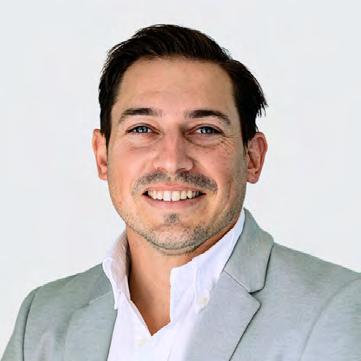
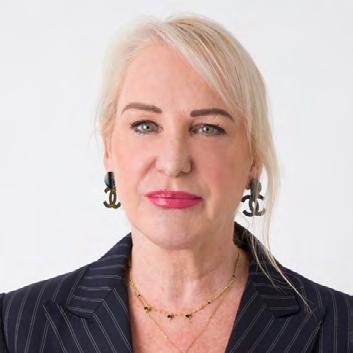

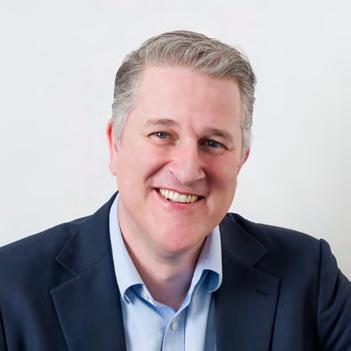


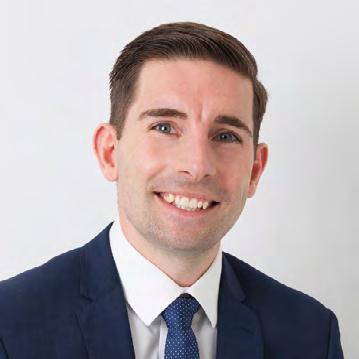
E: scummins@clime.com.au


E: amanda@mtis.com.au

E: harley@mtis.com.au
15
Garth Curry Private Wealth Adviser - NSW E: gcurry@clime.com.au
Sean Cummins Private Wealth Adviser - VIC/ WA/TAS
Stephen Wilson Private Wealth AdviserNSW E: swilson@clime.com.au
Anna Garuccio Private Wealth Adviser E: anna@mtis.com.au
Pauline Hammer Private Wealth Adviser E: pauline@mtis.com.au
David Novotny Private Wealth Adviser E: david@mtis.com.au
Harley McDermott Associate Adviser
Matt Rencken Private Wealth Adviser - QLD E: mattr@clime.com.au
Tara Abeywickrama Wealth Solutions Associate E: tabeywickrama@clime.com.au
Catherine Schonfeldt Wealth Solutions Associate E: cschonfeldt@clime.com.au
Dallas Sinclair Associate Adviser E: dallass@clime.com.au
Want to speak to a Private Wealth Adviser? Email us at associatesupport@clime.com.au or call us on 1300 788 568.
Jo Shi Wealth Solutions Associate E: jo@mtis.com.au
Amanda Brain Associate Adviser
WEALTH COLLECTIVE

Elevate your impact in the world of Not for Profit leadership with our exclusive NFP Round Table Series.
Join individuals and decision-makers from leading NFP Organisitions for engaging sessions led by industry experts covering vital topics such as:
• board governance,
• fundraising strategies,
• volunteer management, and
• regulatory compliance.
Gain actionable insights from success stories and best practices, while expanding your network with like-minded peers and influencers.
Sessions are held 3rd Thursday of each month here in the Clime Office.
Don’t miss this opportunity to drive positive change and maximise your organisation’s potential. Reserve your seat for an upcoming session now.

16
REGISTER HERE




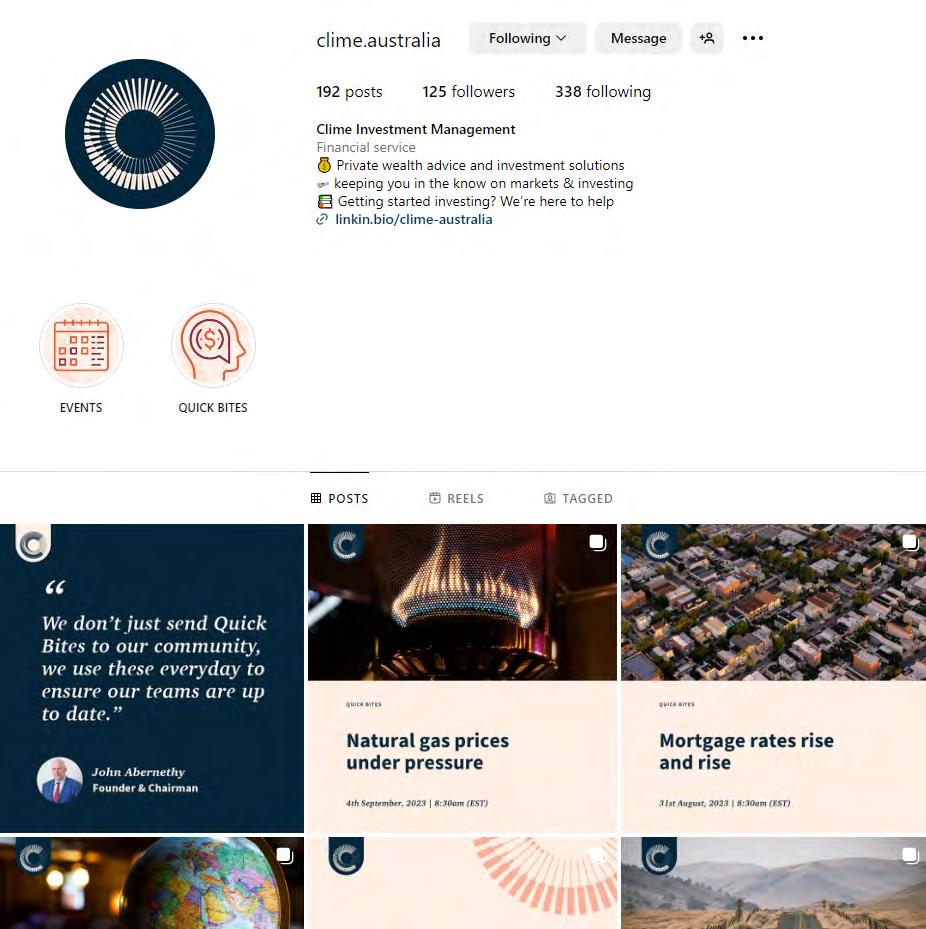
17 Contact Us Have any questions about this edition of the Wealth Collective? Contact your Adviser now or get in touch with us via email at associatesupport@clime.com.au. STAY IN TOUCH Clime Investment Management @clime.australia @clime.australia SCAN here to access more of our resources WEALTH COLLECTIVE
This quarter’s contributors

About Annick Donat
Chief Executive Officer
With over 30 years’ experience in financial services, Annick has been active in her advocacy of financial planning and technology, often supporting and mentoring emerging entrants to financial services. Her expertise spans across governance, strategy, distribution, business and practice development, licensee services and operations management. Annick Donat was appointed CEO of Clime Investment Management Limited on 1 May 2021. With a predilection and curiosity for innovation, Annick believes great advice can change lives. It’s these values that led her to become Chief Executive Officer of Madison Financial Group in 2017 where she strived to empower consumers through great advice. Annick sits on various industry advisery boards including, but not limited to, Advisery and Director roles with Not-for-profit organisations.

About Will Riggall
Chief Investment Officer
Will has been building wealth for Australian investors for more than 20 years. He has a proven track record managing market-beating portfolios and a stellar reputation as an astute analyst. Will’s experience spans the full market-cap range, and his analysis skill is both quantitative and fundamental. Will is proud of his skill at managing investments through the cycle and his ability to create and protect wealth through equity booms and busts. Will is a keen communicator and regularly presents at seminars, webinars and portfolio updates. In addition, he ensures his portfolios are structured to provide advisers and clients with optimal transparency.

About Harley McDermott
Associate Adviser
Harley is an Associate Adviser and has has worked at MTIS/Clime for several years. He is passionate about assisting clients to reach their financial goals and finds great satisfaction in finding solutions to complex financial scenarios. He has moved through paraplanning and recently has completed his Professional Year. Harley is currently completing his Masters of Financial Planning degree. Prior to working at MTIS/Clime, Harley spent several years in retail banking while completing his university studies.
18

About Sarah Metcalf
Philanthropy Adviser and Consultant
Sarah Metcalf is an experienced and highly trusted Philanthropy Adviser and Consultant, having worked with some of Australia’s most successful individuals and families to help them navigate the “why, what and how” of charitable giving. She leads The Collective Manifesto, a business which helps clients give with purpose & impact.
With corporate experience from leading the EY Foundation for eight years, setting up and managing a medical research charity and working with high and ultra-high clients, Sarah has a rare ‘circle of experience’. Her team is focused on delivering joy through giving, alongside extensive knowledge of the for-purpose sector to know which organisations to partner with and support clients to do the most good they can with what they have to give.

About Vincent Chin
Portfolio Manager
PhD Physics, MSc Physics, BSc Ch. Eng. (Hons), Grad. Dip Fin
Vincent has been with Clime for more than 12 years of his 22-year in financial services spanning both Fixed Income and Equities. Due to client demand, he established a goalsbased investment style using quantitative analysis with qualitative top-down process which is utilised in the Clime Income strategies. Vincent is passionate about sustainable ethical investing which forms part of his investment philosophy. Prior to working in financial services, Vincent worked as a scientist specialising in infrared and photovoltaic solar cells. In this time Vincent produced about 50 internationally peer reviewed scientific and technical papers. Vincent holds a PhD in Physics from the University of New South Wales.
19
WEALTH COLLECTIVE

20








 by Harley McDermott, Associate Adviser
by Harley McDermott, Associate Adviser


 by Sarah Metcalf, Philanthropy Adviser and Consultant from Collective
by Sarah Metcalf, Philanthropy Adviser and Consultant from Collective

 Matt Rencken Private Wealth Adviser
Matt Rencken Private Wealth Adviser
 Jo Shi Wealth Solutions Associate
Jo Shi Wealth Solutions Associate
 David Novotny Private Wealth Adviser
David Novotny Private Wealth Adviser






















